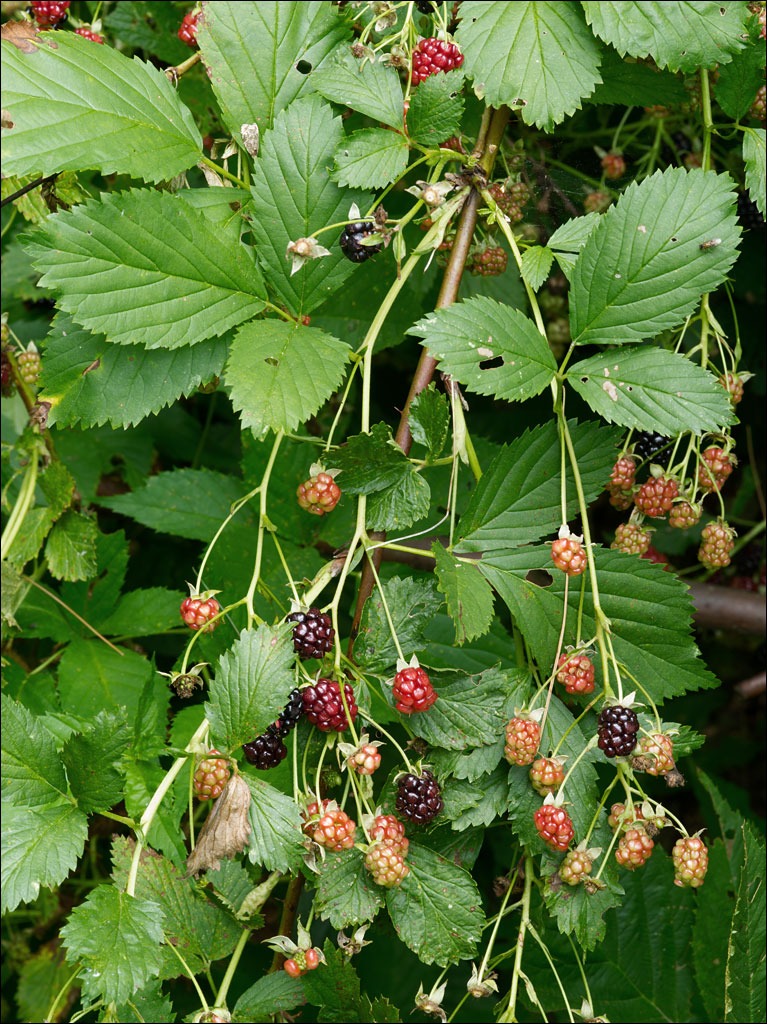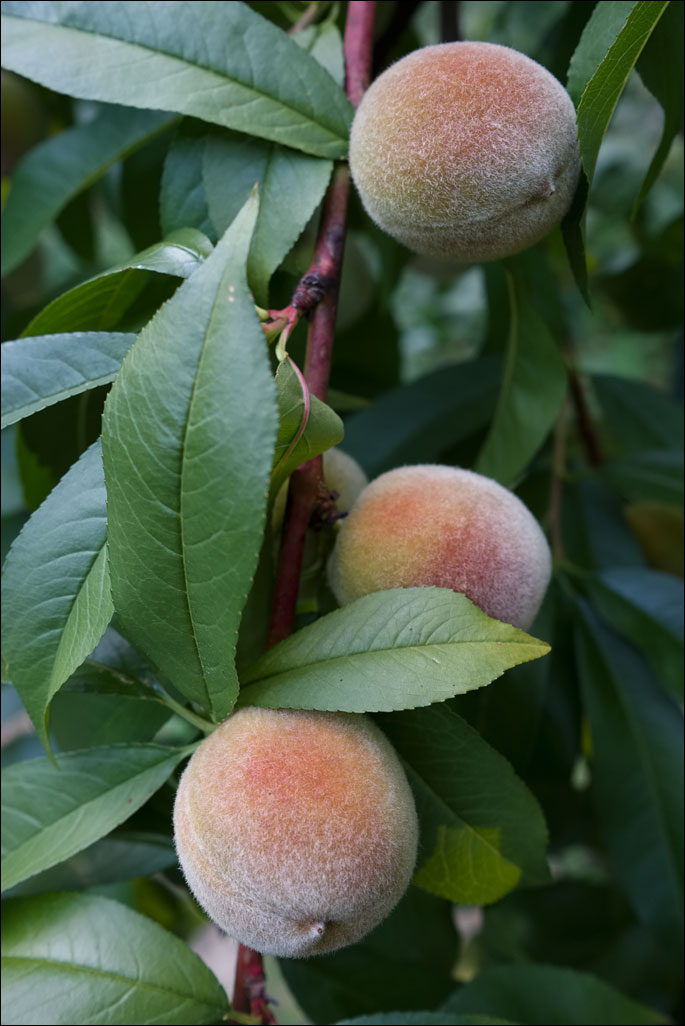 Our Red Haven peaches are doing well in spite of the fact we did not spray them this year. The fruit is not large, but these small tress produce an abundant crop. Click on the image for a larger view.
Our Red Haven peaches are doing well in spite of the fact we did not spray them this year. The fruit is not large, but these small tress produce an abundant crop. Click on the image for a larger view.
Tag Archives: Self-sufficient Life
Daylily—Edible Plants
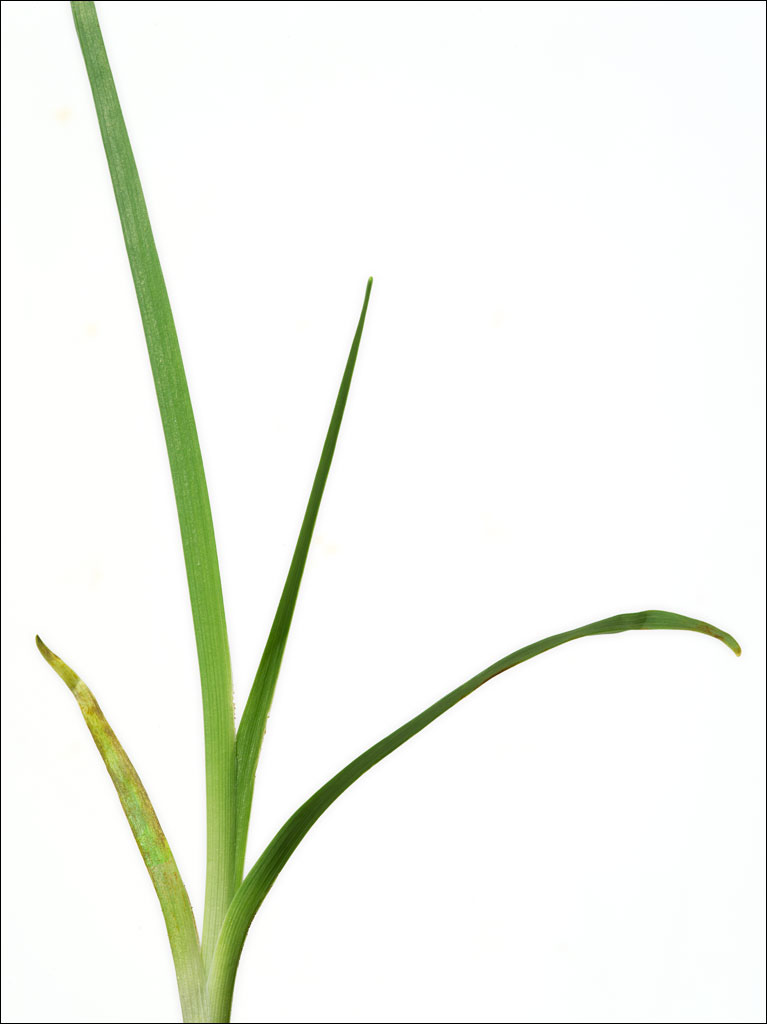 Our daylilies are emerging. While the daylily (hemerocallis fulva) is known as a decorative plant, it is also edible. This time of year we eat the young shoots by stir frying them in soy sauce and serving them on tofu. We harvest the shoots when they are only a few inches long. The ones pictured here would be a little too old. Click on the image for a larger view.
Our daylilies are emerging. While the daylily (hemerocallis fulva) is known as a decorative plant, it is also edible. This time of year we eat the young shoots by stir frying them in soy sauce and serving them on tofu. We harvest the shoots when they are only a few inches long. The ones pictured here would be a little too old. Click on the image for a larger view.
First Snow, Winter 2016
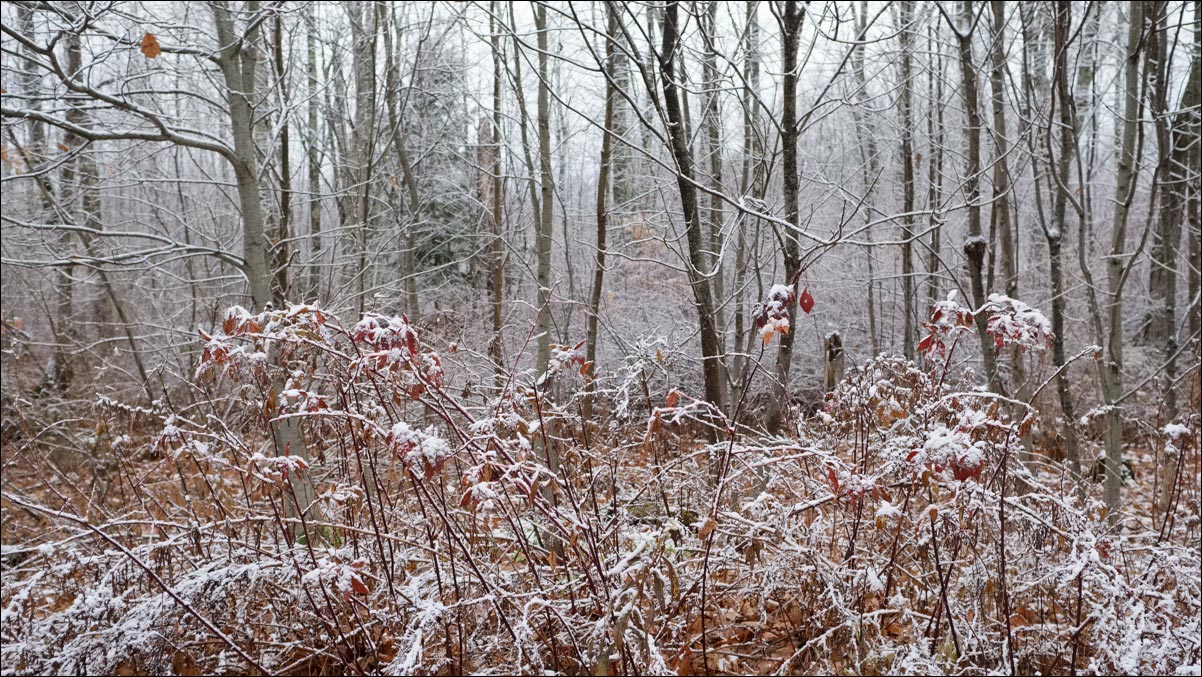 We woke this morning to the first snow of winter. Nothing bad, just a thin layer of crusty ice. The weather has been so mild and warm this year that the snow was a not so gentle reminder the season is changing. One of our blackberry briers is in the foreground. It looked very different in August. Click on the image for a larger view.
We woke this morning to the first snow of winter. Nothing bad, just a thin layer of crusty ice. The weather has been so mild and warm this year that the snow was a not so gentle reminder the season is changing. One of our blackberry briers is in the foreground. It looked very different in August. Click on the image for a larger view.
Grape Harvest
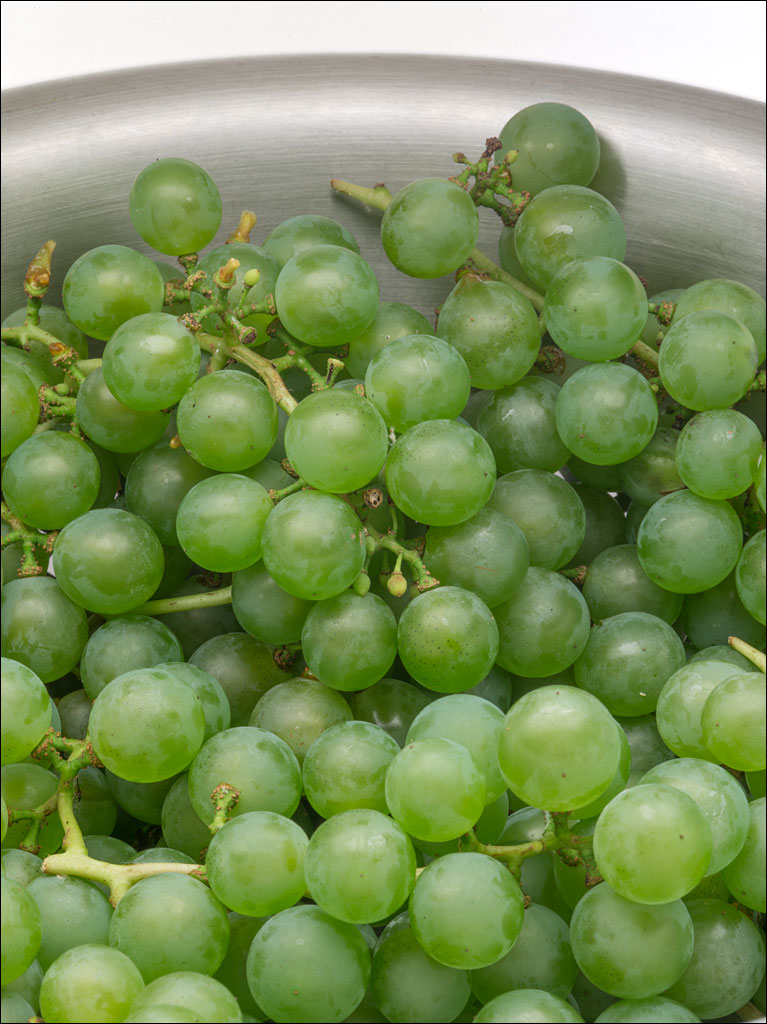 We harvested the last of this year’s grapes yesterday—three large bowls of fruit. We had been enjoying our grapes for the last three weeks. But with evening temperatures dropping, it was time to finish. These are entirely organic, no pesticides are used to protect them. We lose a few fruit to insects, more to birds, but plenty are left for us. Click on the image for a larger view.
We harvested the last of this year’s grapes yesterday—three large bowls of fruit. We had been enjoying our grapes for the last three weeks. But with evening temperatures dropping, it was time to finish. These are entirely organic, no pesticides are used to protect them. We lose a few fruit to insects, more to birds, but plenty are left for us. Click on the image for a larger view.
Small Cranberry
 Small cranberry, Vaccinium oxycoccos, can be found in peat or acidic soils, which gives it its other common name, bog cranberry. This is one of the first plants to colonize burnt bogland and native Americans would burn bogs to stimulate its growth. Like the cultivated cranberry, these are tart. Naturally, this fruit is sought after by wildlife. This plant is on Little Moose Island at the tip of Schoodic peninsular in Acadia National Park. Click on the image for a larger view.
Small cranberry, Vaccinium oxycoccos, can be found in peat or acidic soils, which gives it its other common name, bog cranberry. This is one of the first plants to colonize burnt bogland and native Americans would burn bogs to stimulate its growth. Like the cultivated cranberry, these are tart. Naturally, this fruit is sought after by wildlife. This plant is on Little Moose Island at the tip of Schoodic peninsular in Acadia National Park. Click on the image for a larger view.
Harvest 2016
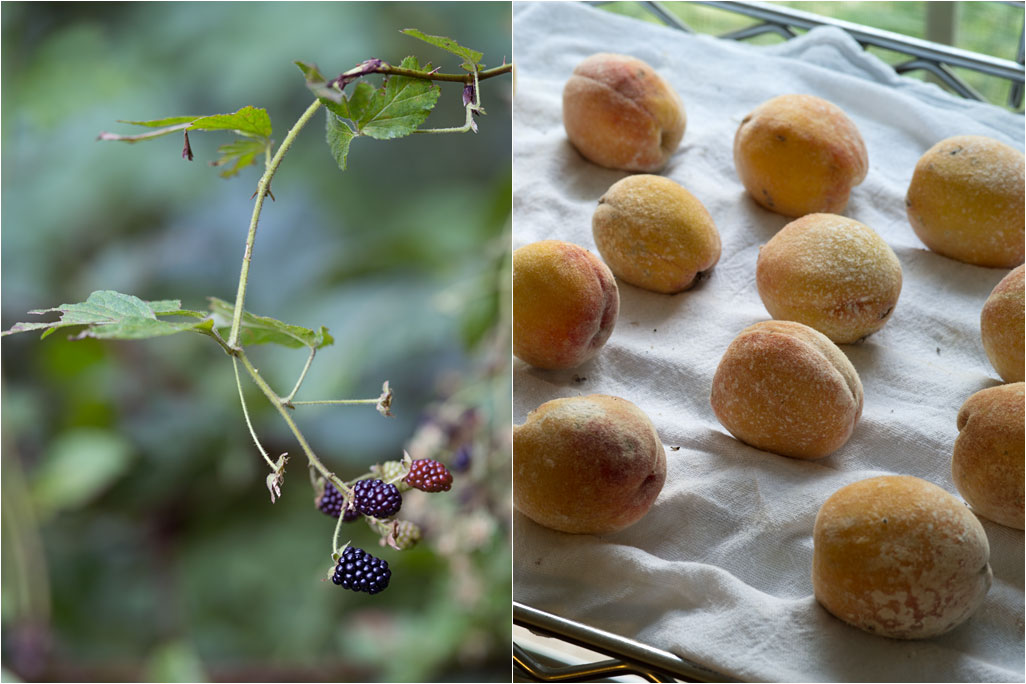 August always takes us by surprise. The glut of food is wonderful, but adds more time than we anticipate on top of our other tasks—we spend a couple of hours in the evening just keeping up with the ripening blackberries. It is not something we can exactly put off. Still, once outside, the act of gathering this fruit becomes its own meditation. That other hectic life at the office dissipates and is replaced by the cycles of the planet. This symbiosis, which is, at one level, indifferent and, at another, dependent, is a great performance we all part of. Click on the image for a larger view.
August always takes us by surprise. The glut of food is wonderful, but adds more time than we anticipate on top of our other tasks—we spend a couple of hours in the evening just keeping up with the ripening blackberries. It is not something we can exactly put off. Still, once outside, the act of gathering this fruit becomes its own meditation. That other hectic life at the office dissipates and is replaced by the cycles of the planet. This symbiosis, which is, at one level, indifferent and, at another, dependent, is a great performance we all part of. Click on the image for a larger view.
Green
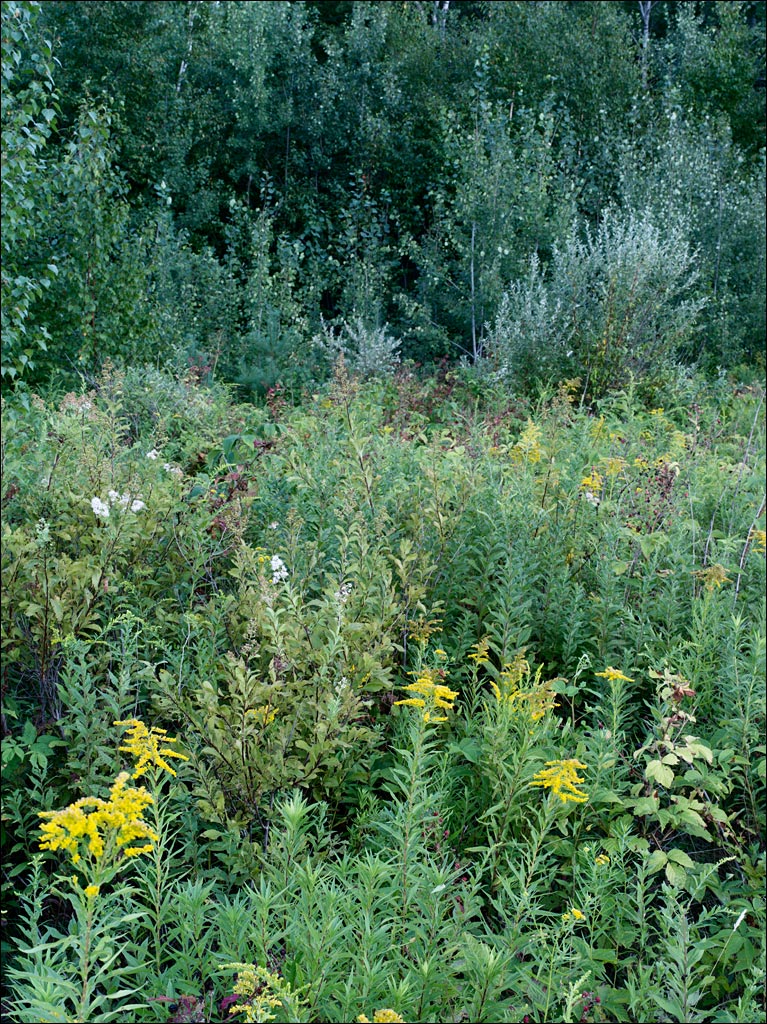 Naomi and I were collecting blackberries from our field last evening. This time of year there seems to be a richness to the variety in the greens in the landscape. The yellow greens of spring remain, but there is a shift to blue greens of the maturing foliage of the trees. The blackberry canes start their transition to the reds of fall. Click on the image for a larger view.
Naomi and I were collecting blackberries from our field last evening. This time of year there seems to be a richness to the variety in the greens in the landscape. The yellow greens of spring remain, but there is a shift to blue greens of the maturing foliage of the trees. The blackberry canes start their transition to the reds of fall. Click on the image for a larger view.
Red Haven Peach
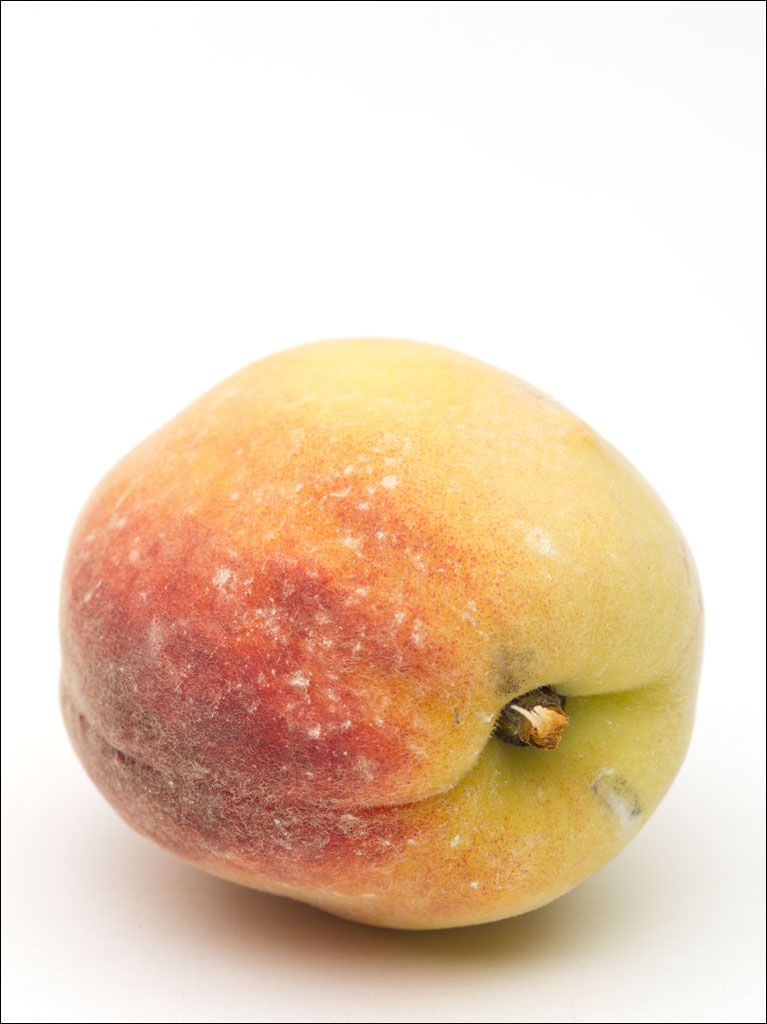 Our peaches are starting to ripen. Red Haven do not produce a large fruit, about 2″ or 5 cm in diameter, but it does produce a large crop. They have a smooth peach flavor with a hint of lemon. Except for Surround, a kaolin clay based spray, the white spots on the fruit, our peaches grow without protection. Click on the image for a larger view.
Our peaches are starting to ripen. Red Haven do not produce a large fruit, about 2″ or 5 cm in diameter, but it does produce a large crop. They have a smooth peach flavor with a hint of lemon. Except for Surround, a kaolin clay based spray, the white spots on the fruit, our peaches grow without protection. Click on the image for a larger view.
Land of Little Rain
 This year has been very dry. Except for a few invasive species like bitter sweet, most of our plants has been struggling. The maddening thing is there have been many days forecast with thunderstorms, yet, while the thunder clouds have passed overhead, very few have let go of their reserves of water. Click on the image for a larger view.
This year has been very dry. Except for a few invasive species like bitter sweet, most of our plants has been struggling. The maddening thing is there have been many days forecast with thunderstorms, yet, while the thunder clouds have passed overhead, very few have let go of their reserves of water. Click on the image for a larger view.

